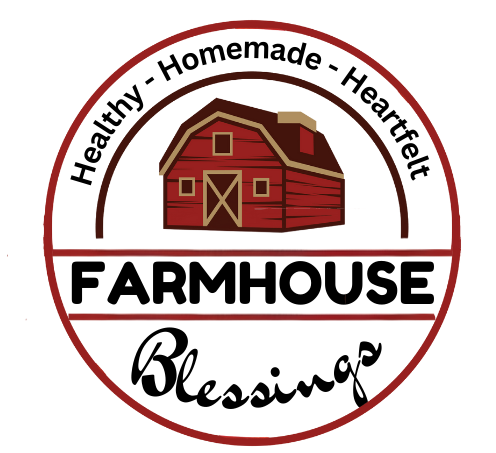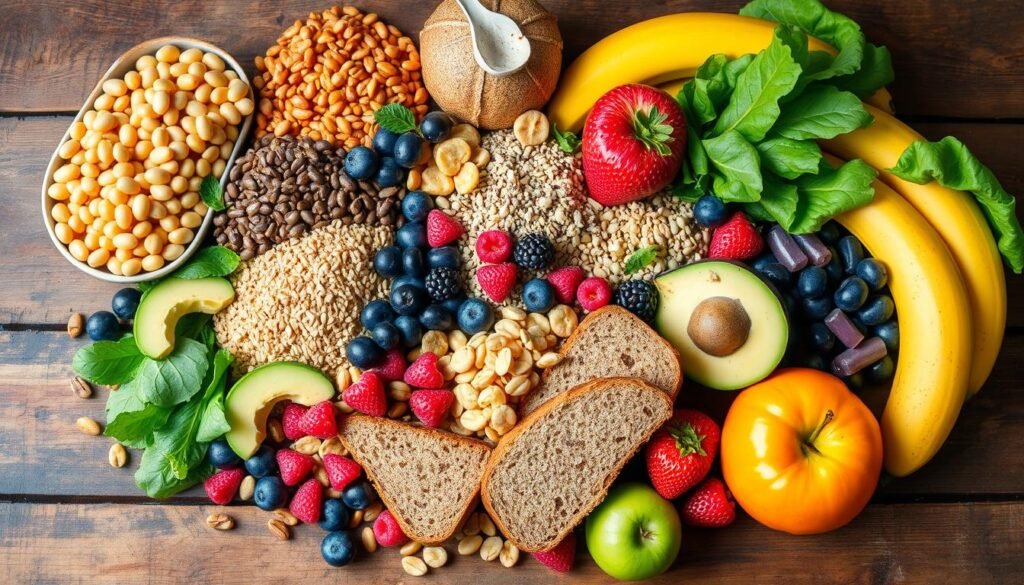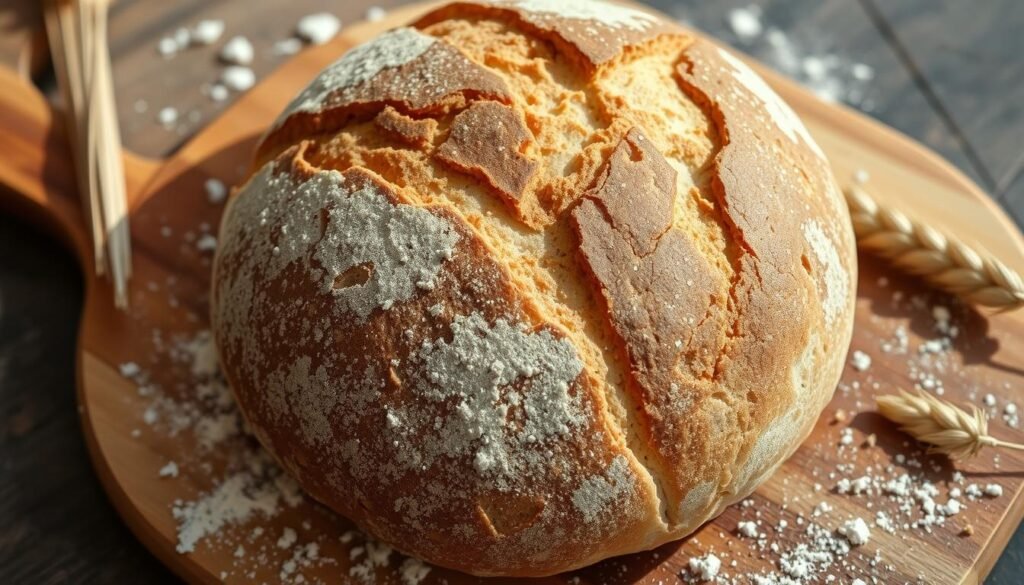Eating foods high in fiber is key to staying healthy. Adding the 18 best high fiber foods to your meals can make a big difference. A high fiber diet can lower cholesterol, control blood sugar, and help with weight management.
There are many healthy fiber-rich foods to choose from. By making these foods part of your diet, you can improve your health and well-being.
Choosing the 18 best high fiber foods can help you eat a balanced diet. A diet rich in fiber offers many benefits, like better digestion and healthy blood sugar levels. Start your journey to better health by exploring high fiber foods and their benefits.
Introduction to High Fiber Foods
Eating a high fiber diet is easy and tasty, with lots of options. You can find fiber in whole grains, fruits, and vegetables. Adding the 18 best high fiber foods to your meals is a great way to start a healthier lifestyle.
Key Takeaways
- Incorporating the 18 best high fiber foods into your diet can have a significant impact on your overall health
- A high fiber diet can help lower cholesterol levels and control blood sugar levels
- Healthy fiber-rich foods can aid in weight management and promote digestive health
- A high fiber diet can support healthy blood sugar levels and overall well-being
- Exploring the world of high fiber foods can help you create a balanced and nutritious diet
- Eating a high fiber diet can be easy and delicious with a wide range of healthy fiber-rich foods to choose from
Understanding the Importance of Dietary Fiber
Dietary fiber is key for a healthy digestive system and overall health. It’s important to eat foods high in fiber every day. A list of fiber-rich foods can guide us in making better diet choices.
Adding high fiber foods to our meals is easy. It’s good to eat a variety of foods to get enough fiber. High-fiber foods help lower the risk of chronic diseases and keep our digestive system healthy.
Daily Recommended Fiber Intake
The amount of fiber we should eat daily changes with age, sex, and other factors. Most adults need 25-30 grams of fiber each day. A list of fiber-rich foods can help us reach this goal.
Health Benefits of High-Fiber Foods
Eating foods high in fiber has many health benefits. It can lower the risk of heart disease, type 2 diabetes, and some cancers. It also helps with digestion and keeps blood sugar levels healthy.
Types of Fiber: Soluble vs. Insoluble
Fiber comes in two types: soluble and insoluble. Soluble fiber dissolves in water and can lower cholesterol. Insoluble fiber doesn’t dissolve in water and helps with regular bowel movements.
Knowing how important dietary fiber is and eating foods high in fiber helps keep our digestive system and overall health in check. A list of fiber-rich foods is a great tool for making smart diet choices.
18 Best High Fiber Foods for Your Daily Diet
For good digestive health, eating high fiber meals every day is key. Fiber-packed foods help keep your digestion regular, prevent constipation, and keep blood sugar levels healthy. Here are some top high fiber foods to add to your meals:
Eating a mix of high fiber meals is good for your health. Fruits, veggies, whole grains, and legumes are great for your digestion. They’re full of nutrients and support healthy digestion.
These foods taste great and are full of fiber. Adding them to your diet is a smart move for your health. They help keep your digestion on track and support your overall well-being.
| Food | Fiber Content (per serving) |
|---|---|
| Apple | 4.5 grams |
| Carrots | 3.7 grams |
| Quinoa | 5.2 grams |
It’s easy and tasty to add fiber-packed foods to your diet. Try these high fiber meals daily to boost your digestion and health.
Powerful Whole Grain Sources of Fiber
Whole grains are packed with dietary fiber, offering many health benefits. They help lower cholesterol, control blood sugar, and support weight management. So, when you’re looking for high fiber foods, start with whole grains.
Quinoa and Ancient Grains
Quinoa and ancient grains like Kamut and spelt are top picks for fiber. They’re not just high in fiber but also in protein and minerals. This makes them a fantastic choice for a healthy diet.
- Quinoa: 5 grams of fiber per cup
- Kamut: 6 grams of fiber per cup
- Spelt: 4 grams of fiber per cup
Oats and Barley
Oats and barley are also great for fiber. Enjoy them as oatmeal or barley soup. You can also add them to salads and other dishes for extra nutrition.
Whole Wheat Products
Whole wheat products like bread, pasta, and cereals are full of fiber. When buying whole wheat products, always look for the word “whole” on the label. This ensures you’re getting a fiber-rich option.
| Food | Fiber Content |
|---|---|
| Whole wheat bread | 3-4 grams per slice |
| Whole wheat pasta | 4-6 grams per cup |
| Whole grain cereals | 3-5 grams per serving |
Fiber-Rich Legumes and Pulses
Legumes and pulses are packed with fiber, making them great for a healthy diet. They offer essential nutrients like protein and vitamins. Beans, lentils, and peas are all good for your digestive health.
Adding these foods to your meals can boost your digestive health. Try beans in salads, lentils in soups, or peas with garlic as a side. Legumes are also great in vegetarian burgers and international cuisine.
Legumes have many benefits. They are high in fiber and protein. They also have lots of vitamins and minerals. Eating them can lower cholesterol and help with blood sugar.
- High in fiber and protein
- Rich in vitamins and minerals
- Can help lower cholesterol levels
- Support healthy blood sugar levels
To get the most from legumes, cook them right. Soaking, boiling, or using a pressure cooker works well. Adding legumes to your diet can greatly improve your health.
It’s easy and tasty to add legumes to your diet. They are full of nutrients and can be used in many ways. They’re a smart choice for better digestive health.
Nutrient-Dense Vegetables High in Fiber
Vegetables are key in a fiber-rich foods list, giving us important nutrients and fiber. They are great for getting top sources of dietary fiber. You can easily add them to your meals every day.
Eating a variety of vegetables helps you get enough fiber. The best high fiber food options include leafy greens, root veggies, and cruciferous ones.
Leafy Greens
Leafy greens like spinach, kale, and collard greens are full of fiber and nutrients. You can toss them in salads, blend them in smoothies, or sauté them as a side.
Root Vegetables
Root veggies like carrots, beets, and sweet potatoes are fiber-rich. You can roast, boil, or mash them.
Cruciferous Vegetables
Cruciferous veggies like broccoli, cauliflower, and Brussels sprouts are not just high in fiber. They also have compounds that fight cancer.
Adding these top sources of dietary fiber to your meals can boost your health. It helps with digestion and keeps blood sugar levels healthy. By changing your diet to include more fiber-rich foods list items, you’re moving towards a healthier life.
Fruits That Pack a Fiber Punch
Fruits are great for your digestive health, offering important nutrients and fiber. Eating fruits that are high in fiber can help keep your digestive system regular. Foods like berries, apples, and bananas are perfect for a healthy diet.
Here are some top fruits for fiber:
- Avocados, which are a rich source of dietary fiber
- Berries, such as raspberries and strawberries, which are high in fiber and antioxidants
- Apples, which contain both soluble and insoluble fiber
Adding these fruits to your meals can be tasty and simple. Try adding sliced apples to your oatmeal or yogurt. Or, snack on fresh berries all day. You can also blend your favorite fruits into a smoothie for a quick breakfast.
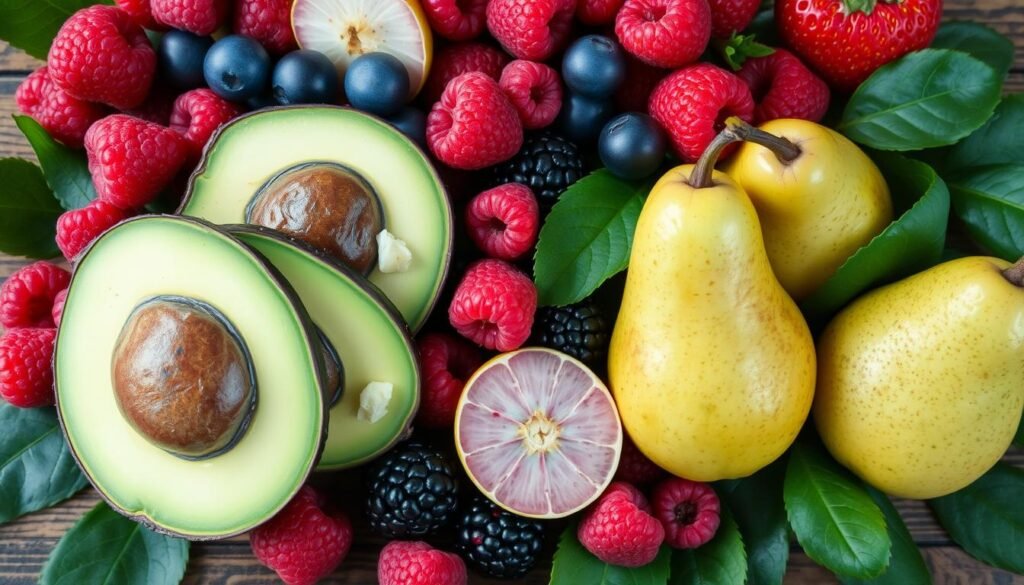
By focusing on high fiber meals, you can improve your health and well-being. With so many tasty and fiber-rich options, starting a healthier diet is easy.
Nuts and Seeds: Compact Fiber Sources
Nuts and seeds are packed with nutrients and are great for fiber. They’re easy to add to your meals to increase your fiber. There are many types to choose from, so you can find what you like.
Nuts and seeds are often missed as fiber sources. But they’re full of fiber and can be a good addition to your diet. Almonds, walnuts, chia seeds, and flaxseeds are some of the best options.
Top Fiber-Rich Nuts
- Almonds: 1 ounce of almonds contains about 3.5 grams of fiber
- Walnuts: 1 ounce of walnuts contains about 1.9 grams of fiber
- Pecans: 1 ounce of pecans contains about 2.7 grams of fiber
Seeds for Fiber Boost
Seeds are also a good source of fiber. You can easily add them to your meals. Chia seeds, flaxseeds, and hemp seeds are some of the best for fiber.
Creative Ways to Include Nuts and Seeds
There are many ways to add nuts and seeds to your diet. You can mix them into oatmeal, yogurt, or salads. They’re also great as a topping for smoothie bowls or a crunchy snack.
| Nut/Seed | Fiber Content (per ounce) |
|---|---|
| Almonds | 3.5 grams |
| Chia Seeds | 10.6 grams |
| Flaxseeds | 7.7 grams |
Creating a High-Fiber Meal Plan
To get enough fiber, you need a high-fiber meal plan. This means adding fiber-rich foods to your daily meals. This helps keep your health and digestion in top shape.
Creating a high-fiber meal plan is simple and tasty. Start your day with fruits and veggies in your cereal or oatmeal. Use whole grains for sandwiches and whole grain bread for meals.
Breakfast Options
- Oatmeal with fruits and nuts
- Whole grain toast with avocado and eggs
- Smoothie bowl with spinach, banana, and almond milk
Lunch and Dinner Ideas
- Grilled chicken salad with mixed greens, whole grains, and vegetables
- Quinoa and black bean bowl with roasted vegetables
- Whole grain pasta with marinara sauce and sautéed vegetables
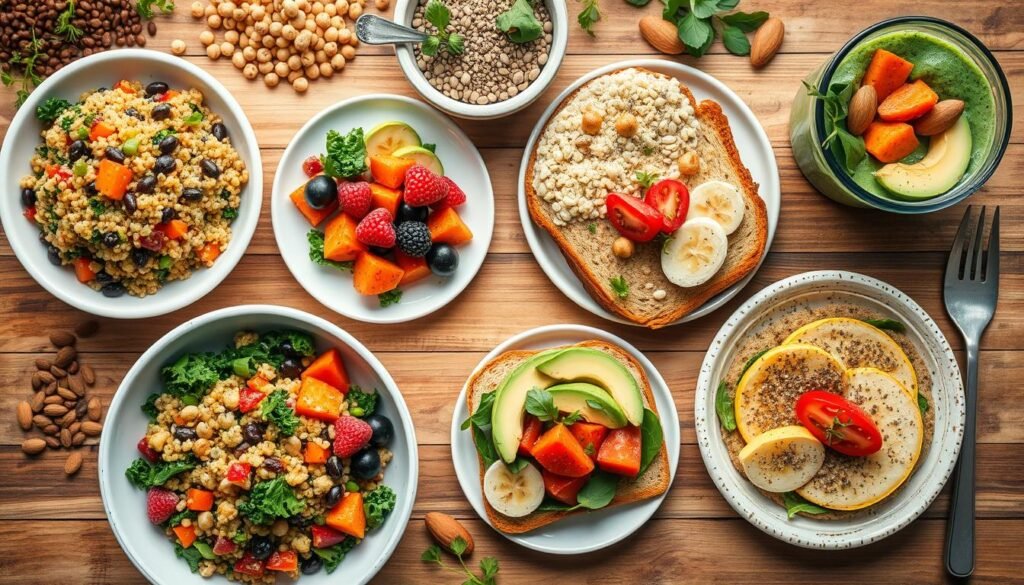
Healthy Snacks
Healthy snacks are key to a high-fiber meal plan. Fruits, nuts, and seeds are all high in fiber. They’re easy to add to your diet for a healthy digestive system.
| Food | Fiber Content |
|---|---|
| Apple | 4.5 grams |
| Almonds | 3.5 grams |
| Chia Seeds | 10.6 grams |
Tips for Increasing Fiber Intake Gradually
To boost your fiber, start with small steps. Add a variety of fiber-rich foods list to your meals. Include top sources of dietary fiber like whole grains, legumes, and fruits. This way, you’ll get a good mix of fiber.
Here are some tips to help you increase your fiber intake:
- Start your day with a high-fiber breakfast, such as oatmeal with fruit or whole-grain toast with avocado
- Incorporate legumes, such as beans or lentils, into your lunches and dinners
- Snack on fruits, nuts, and seeds, which are all high fiber food options
Don’t forget to drink lots of water and stay active. These habits support your digestive health. By following these tips, you can smoothly move to a high-fiber diet without issues.
Conclusion: Embracing a Fiber-Rich Lifestyle
Incorporating high fiber foods into your diet can greatly improve your health. These foods offer many health benefits and are easy to add to your meals. A fiber-rich lifestyle is definitely achievable.
Simple changes, like choosing whole grains or eating more fruits and veggies, can boost your fiber intake. This supports your digestive system, heart health, and helps with weight management. Small changes can make a big difference in your health.
Let these 18 high fiber foods be the start of your healthy lifestyle. With the right knowledge and commitment, you can improve your gut health and reduce disease risk. Start today and see how a fiber-rich diet can transform your well-being.
